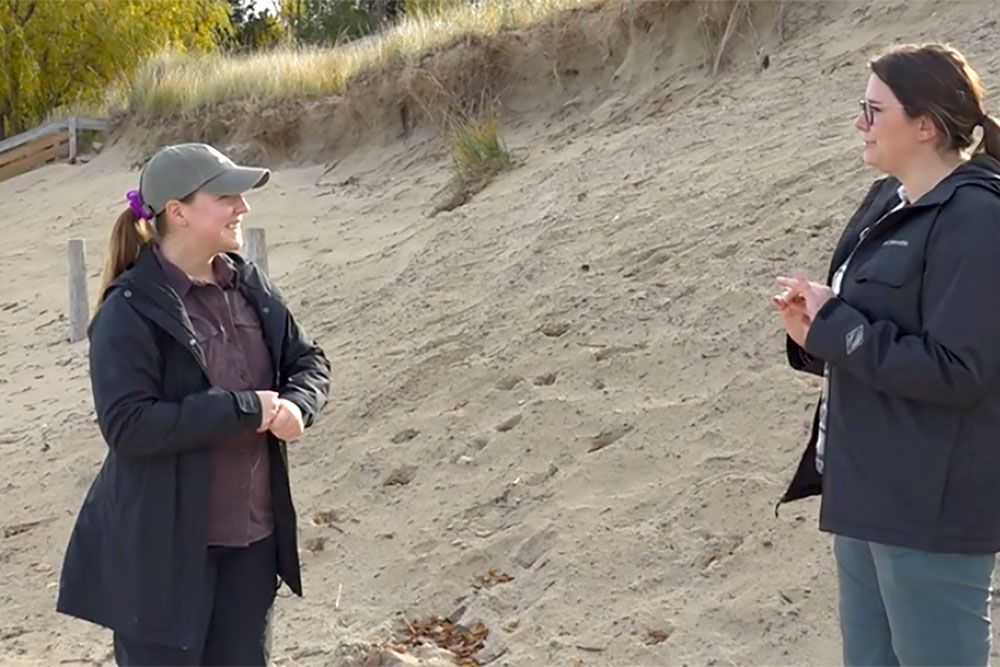Sand Dunes along the Lake Huron Coastline

On a chilly day in October 2022, Ranger Em met up with Holly from the Lake Huron Coastal Centre to chat about the Sand Dunes along the Lake Huron coastline.
Watch the full video here:
... and read the article here:
Learn with Ranger Em: Sand Dunes and the Lake Huron Coastal Centre
By Emily Febrey (also known as ‘Ranger Em’), Communications and Outreach Specialist, St. Clair Region Conservation Authority
Let’s chat about a vital ecosystem you can find along the coast of Lake Huron: sand dunes.
Sand dunes are defined as having less than 60 per cent tree coverage. Sand dunes can vary between patchy, open, or scattered. Sand dunes along Lake Huron are constantly battling difficult weather, from wind, water, or ice. Sand dunes prove to be a hard place to live, but a variety of species have adapted to live in these environments.
Sand dunes are known as ‘dynamic beaches.’ This means they are constantly changing with the lake, which is influenced by climate and environment. For example, during low water levels, the wind and waves will wash sand up onto the shore and create sand dunes. By comparison, during periods of high water levels, wind and waves will erode the sand dunes and bring that sand out into the lake and create sandbars.
Sandbars are basically underwater sand dunes, as they both help absorb the impact of waves and protect the shoreline from erosion and other issues.
These are not very common ecosystems. Only 2-3 per cent of Lake Huron’s shoreline consists of sand beach and dune environments. Furthermore, sand dunes are among North America’s most fragile ecosystems. This, combined with the fact that sand dunes are rare, suggests that they are of national significance to Canada, according to the Lake Huron Coastal Centre.
The significance of sand dunes is important to note because of their popularity. Sand dunes are an extremely popular attraction along Lake Huron — we love visiting a beach in the summertime, whether to swim, experience a famous Lake Huron sunset, or explore the beautiful coastal towns. This amount of traffic puts a lot of stress and pressure on an already fragile ecosystem.
Development, invasive species, litter, and human disturbance, which can include walking on dunes, unleashed pets in dune environments, and even excessive grooming and nourishment, can all have negative impacts on our vital and fragile dune environments. Towns and municipalities along Lake Huron’s coastline have already noticed a decrease in dune environment and changes to their structure. Municipalities, like Lambton Shores, have been looking into solutions like transplanting dune species to re-establish the environment.
To learn more about these environments, and this work, watch this episode, or ‘Learn with Ranger Em,’ or read the following resources:
